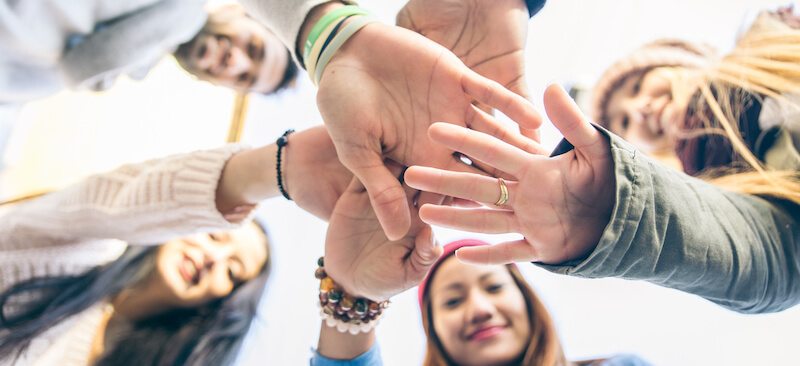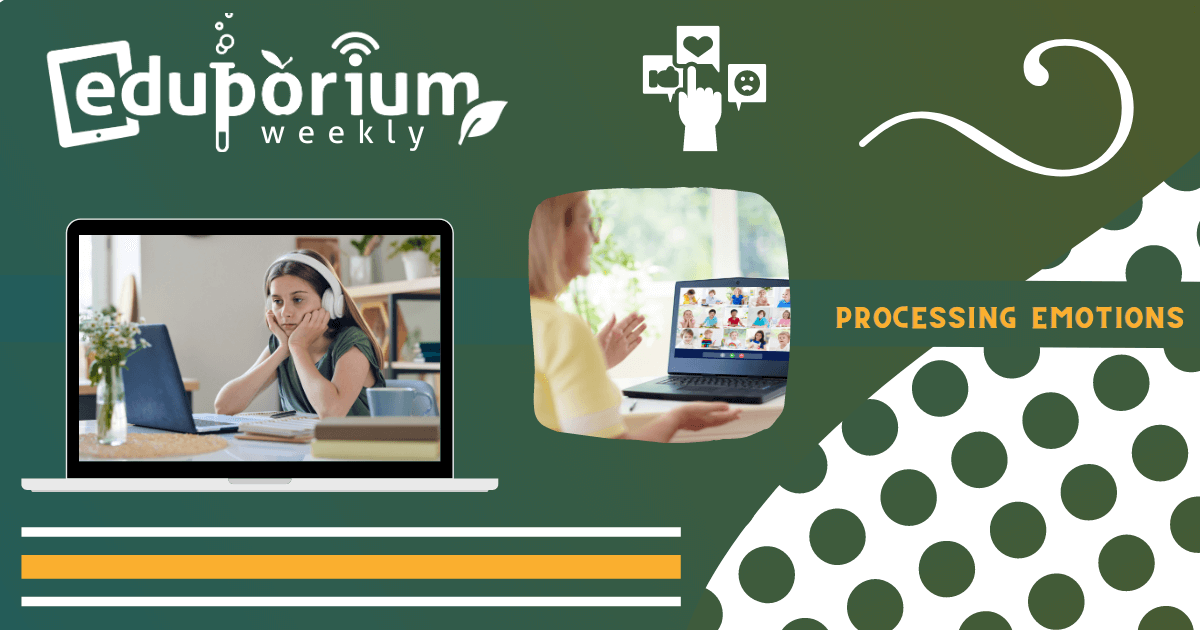Over the last year, we've really ramped up our focus on social-emotional learning in education. As strong advocates for the use of EdTech tools in education and hands-on learning experiences, however, this may come as somewhat of a surprise. The connection between hands-on learning and SEL, despite on-the-surface appearances, is actually pretty deep. MakerEd tools allow students to connect their heads to their hearts using their hands. And, up until a year ago, so much good was being done in the classroom to advance social and emotional stability by using technology in creative ways. Now, however, there are all new reasons to focus on SEL in remote learning.
Why Focus on SEL in Remote Learning?
The tough (and also awesome) thing about social-emotional learning is that it's really made up of two elements. The first has to do with helping students build key competencies and soft skills. And, the second is more related to ensuring they're in a good place emotionally. This second element can often be tied to the first, however. That is to say, if students have developed strong SEL foundations over time, they're more likely to be in a better place emotionally. From there, if they're emotionally sound in remote learning, they're more likely to progress academically. In other words, students who are stressed, feeling isolated, or overwhelmed are more likely to struggle. For all of these reasons, SEL remains a huge focus in distance learning.
SEL as a connector.
It might be natural for educators, parents, or students to think of SEL as an academic subject. This isn't entirely inaccurate, but it's fairly unlikely any students would be taking classes dedicated to this. What's more likely, however, is that SEL is an element of each one of their classes. Social-emotional learning connections and opportunities can be woven into almost any lesson—remote or otherwise. This is because so many elements of learning and of childhood can be connected to SEL. We know that communication, positive reinforcement, and relationship building are big components of SEL, distance learning, and early education in general. Focusing on it can really help create well-rounded students at any grade level.
Focusing on positivity.
Positive relationships between students and teachers generally lead to better learning outcomes for students. If educators can schedule regular conversations with individual students (perhaps including their parents too), this is a valuable opportunity for individual praise or positive reinforcement. More in terms of the whole class, teachers can also weave strategies for soft skill development into everyday lessons. Showing kids how to be organized, plan, and motivate themselves is very helpful. Beyond skills that will serve individual students, however, teachers can also demonstrate how to effectively communicate, collaborate, and coexist with classmates. Finally, making time for current events is important, too. Especially with all that's going on in today's world, students might have fears or important topics to discuss. Teachers shouldn't be afraid to let that element of SEL come into play—even in distance learning.

Ideas to Integrate SEL in Remote Learning
Teaching SEL in a remote setting might sound like one more additional responsibility for teachers. Thinking of it as an opportunity to include brief, little elements of SEL, however, could make it easier. Though education remains largely virtual, SEL remains a critical component of that experience. SEL and mindfulness practices help students become more comfortable in their learning environments and can also help them become successful in more ways than one in the long term. For that reason, implementing SEL strategies in remote learning has been common. Making it a point to start the day with individual greetings is one good approach. Like they would in the physical classroom, teachers can create personalized daily greetings for each student as they get to know them.
Mindfulness and mini group meetings.
Another important element of social-emotional learning in education is mindfulness. Mindfulness is valuable for both teachers and students and involves creating a sense of calmness with simple activities. Taking a few minutes at the beginning of a class for some deep breathing, for example, can go a long way. While mindfulness helps on the emotional side of things, students also need opportunities for building social skills. This can be done using breakout rooms or setting up small group meetings each day. As they get more comfortable interacting with peers, students will start to effectively use some of the conversational skills, like conflict resolution, perseverance, and collaboration more regularly and successfully. And, teachers can let students know what to focus on during this time!
Strategies for teaching skills.
The list of strategies teachers can use is extensive and might vary for different students. Some other approaches could include giving kids unplugged activities to lessen screen time, playing games to build relationships, and watching videos. Educators could also opt to teach SEL skills in a more direct way. Whether through lessons with the context students need or simply spelling out the skills and concepts they need to retain, this can be effective. Teachers might talk about certain skills with students or teach them more about what it really means. From there, they can discuss why it's important, create meaningful opportunities for students to put it into practice, and encourage them to continue developing that skill moving forward.
Supporting Students with Unique Needs
We know that students have different academic and social preferences when they're in the classroom. For many of them, this has remained true while learning from home. On top of everything else, educators have had to find a way to cater to each student's learning and social preferences throughout the remote learning era. Some of these students may be facing traumas. Others might be dealing with anxieties and social isolation. While still others might be relishing the opportunity to learn independently. What we're getting at is that the needs of every student vary and, for those having the toughest time in distance learning, helping them return to a social-emotional balance could be key.
Structure and routine in remote learning.
For many of these students, they simply need help with creating a new and structured routine. With this continuity, in a lot of cases, comes comfort and, with comfort, comes greater levels of achievement. Some students have likely had a hard time adapting to these new routines and changes. Working with them to create new routines that help highlight their strengths is a valuable endeavor. Some students might respond well to scheduled brain breaks, clear goal setting, or removing technology from their home learning space to help minimize distractions. All of these contribute to minimizing the presence of minor stressors, which could add up and boil over during time.
Consistency breeds social-emotional stability.
Even the way in which teachers design remote learning assignments can help reduce student stress levels. Meeting student needs can be done in simple ways, like teaching them how to process stress, encouraging them to find answers to their immediate questions independently, and focus on boosting their organization. When teachers consistently provide information in the same place and in the same manner, this helps. Also, some students might benefit from individual learning plans. And, while creating IEP's in remote learning takes time, setting individual SEL goals for students might be easier. All this and more helps contribute to creating and maintaining those all-important positive student-teacher relationships.

More Strategies for SEL
Social-emotional stability does more for students than helping them deal with stressful experiences and develop positive relationships. It helps kids of all ages better understand complex issues that may or may not even be academic. Developing a strong social-emotional core also helps students show empathy and interpret the actions of peers and adults. When students better understand their own thoughts and feelings as well as those of others, it becomes easier for them to express what they're thinking. And, in the age of remote learning, some of them need every opportunity to talk about their thoughts.
Weaving in emotional support.
Besides check-ins and SEL-focused activities, educators can help students address their emotions in other ways. Asking students to consider someone's feelings is applicable in almost any lesson. From literature to history, the topic of discussion likely involves someone dealing with something significant. Giving them time to jot down thoughts in a journal or through art projects can also prove helpful. Oftentimes, it's the younger students who need more social-emotional support in remote learning and this allows teachers to use more of these strategies. Simply reading to them can help create some normalcy and, of course, provides opportunities for discussions.
The teacher's role.
For teachers, it can be helpful to remember the long-term benefits of teaching students SEL skills and tenets. Social-emotional awareness is certainly tied to a desire to be a lifelong learner. SEL takes learning experiences past academics for students and gives more meaning to being ready for the real world. Since it's so vital for students to be emotionally healthy during this time, teachers tend to employ whatever strategies are most effective. At the same time, it's equally important for them to know which SEL skills to focus on and how to help students develop them. And, remember, using SEL in remote learning should also help students outside the "classroom" and improve their social and emotional health as they hopefully inch closer to a classroom return.
SEL in a Remote Environment
When remote learning first begun, it was all about keeping things afloat. Now that it's gone on for just about a year, however, educators should be able to address SEL needs more effectively. Prioritizing student safety, comfort, and mental health might be tops on the to-do list. It takes some effort but, when educators make it a point to create stability, provide support that goes beyond academics, and communicate with students effectively, it tends to pay off. When it comes down to it, establishing and committing to consistent routines is one of the best strategies for keeping morale high.
Adjusting communication with students.
Creating routines helps students re-establish some familiarity even in remote environments. Not only will it help bolster their mental health, it should also help bridge the gap when it comes to mirroring classroom learning in remote spaces. It's worth repeating that building a sense of community with safe routines helps a lot. Even if educators are constantly making adjustments, having a plan in place should help students adapt. Consistent interactions (even if they're virtual) are so key for keeping those connections intact. This can be done if teachers focus on communication strategies and the tone in which they communicate with students.
Returning to school and managing emotions.
One additional component of SEL in remote learning involves returning to school. Some students have been lucky enough to return already, but others have been out of the classroom for about a year now. Those students—especially the younger ones—may have legitimate fears about returning to the physical school building. They may have forgotten what it's like to interact with friends or create new relationships. Or, they may feel afraid to be around a lot of people. If returning to the classroom is on your horizon, taking some time to mentally prepare students might be a good plan. And, in those cases, teachers can take the same steps as in other SEL initiatives. Talk to students, encourage them to communicate their fears, and help them process those emotions in the best way possible.
For the latest EdTech, STEM, and SEL news, follow Eduporium on Twitter and Instagram, like us on Facebook, or sign up for our newsletter for announcements on the best EdTech deals around! Have an idea for the next Eduporium Weekly theme? Send us a message on any of our social media accounts!



